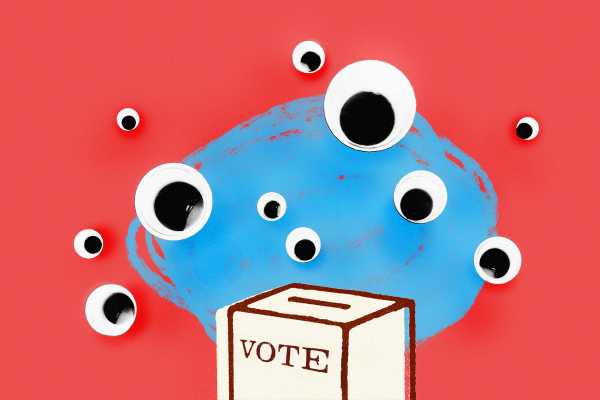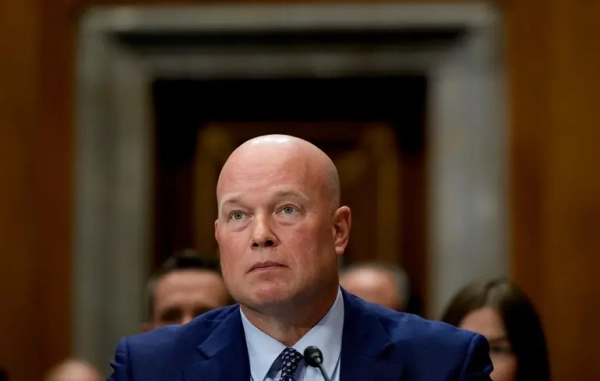
Part of The 2022 midterm elections, explained
Filling out a ballot stuffed with granular, detailed policy measures can be enough to make a voter appreciate representative democracy, in which someone else is elected to make these decisions on your behalf.
Some of the issues voters will have to decipher this year: Should circuit court judges in Howard County, Maryland, be required to serve as judges in the Orphans’ Court? What requirements should California have for kidney dialysis clinics? Quick — what do you say to expanding a Georgia agricultural tax exemption to cover, among other things, dairy products and eggs?
On Election Day, voters will weigh in on a total of 137 state ballot measures, policy questions put directly to the voters rather than settled by legislatures or the executive branch. They aren’t evenly distributed: 13 states have no ballot measures at all, while in Alabama, Arizona, and Colorado, voters are wrestling with at least 10 different propositions. There are even ballot measures about ballot measures, where voters are being asked if it should be harder to make policy this way in the first place.
The effects of most ballot measures, of course, are usually limited to states voting for them. But they’re still worth watching. Ballot measures can be a path forward for policies that state legislators won’t touch on their own (like the success of marijuana legalization campaigns). A successful ballot measure in one state can lead to a cascade of similar campaigns in the coming years (as has happened with Medicaid expansion, marijuana legalization, minimum wage, and more). Ballot measures matter for the same reason that they can sometimes be frustrating: They’re a direct opportunity for voters to determine policy on their own.
This year, as results roll in, here are nine ballot measures to watch, why they matter, and what we know about where voters stand. One caveat to keep in mind: Ballot measures are typically polled infrequently, if at all, so there could still be election night surprises.
1) Medicaid expansion in South Dakota
Also known as: South Dakota Constitutional Amendment D
A “yes” vote means: If the amendment passes, anybody making less than 133 percent of the federal poverty level (about $18,000 for an individual or $36,900 for a family of four) would qualify for Medicaid coverage.
What’s at stake: Since 2017, voters in six states have directly voted to expand Medicaid, making more low-income adults eligible for free public health coverage. South Dakota could become the seventh. Expansion would cover an estimated 45,000 South Dakotans.
Why does Medicaid expansion keep finding success with red-state voters, if not their elected representatives? Three reasons, people familiar with the campaigns say: hearing from neighbors who will benefit, bringing federal tax dollars back to the state, and protecting the solvency of rural hospitals and health clinics. One of the ads running in South Dakota features a farmer who says he wants to keep his family farm running but can’t afford health care right now.
What the polls say: Nationally, polling on all ballot measures — including this one — tends to be pretty scant, but an Emerson College poll in mid-October found that 51 percent of likely voters planned to vote in favor of the measure, with another 28 percent undecided.
Read more: Republican states keep refusing to expand Medicaid — until you ask their voters —Dylan Scott
2) Abortion in Michigan
On the ballot as: Ballot Proposal 3
A “yes” vote means: Adding an amendment to the Michigan constitution to “provide that every individual has a right to reproductive freedom,” including decisions related to pregnancy, prenatal care, contraception, childbirth, and abortion. The state legislature could regulate abortion after viability, with exceptions for the physical and mental health of the pregnant person.
What’s at stake: Abortion rights are at stake up and down the ballot in Michigan. If Republicans win back the governor’s mansion and maintain control of the state legislature, they could pass new restrictions on the procedure — but amending the state constitution to provide for a right to reproductive freedom would be a bulwark against those restrictions. The Republican candidate for governor, Tudor Dixon, has said that she would respect the results of the vote on the measure, even though she personally opposes abortion.
What the polls say: A late October poll by the Detroit News and WDIV found that 55 percent of voters supported the amendment, down from 61 percent earlier in the month. The margin of error was 4 percent.
Elsewhere: California and Vermont are also voting on state constitutional amendments to protect reproductive freedom or autonomy. In Kentucky, voters could amend the constitution to state that it doesn’t include a right to abortion. —Nicole Narea
3) Marijuana legalization in North Dakota
On the ballot as: Statutory Measure 2
A “yes” vote means: People over 21 could legally use marijuana and legally possess up to 1 ounce of the drug, and North Dakota would license up to seven marijuana cultivation facilities and 18 marijuana retailers.
What’s at stake: In the decade since recreational marijuana ballot measures began succeeding at the ballot box, they’ve failed only a few times — and one of those failures was in North Dakota in 2018, when an attempt to legalize recreational marijuana was roundly defeated. Nearly 60 percent of voters said no to the measure.
Now North Dakota (along with Missouri, where a legalization measure was also defeated in 2018) is trying again. This time, according to the Associated Press, the pro-legalization side is better-funded and a major opponent in 2018 isn’t jumping into the race.
Elsewhere: Missouri (where legalization also failed in 2018), Maryland, Arkansas, and South Dakota (where a successful legalization ballot measure was overturned by the state Supreme Court) are also voting to legalize pot this year. —Libby Nelson
4) A constitutional right to collective bargaining in Illinois
On the ballot as: Illinois Amendment 1
A “yes” vote means: Amending the Illinois constitution to include the right to collectively bargain and ban “right-to-work” laws, which allow workers to be exempted from dues for union representation.
What’s at stake: Other states have constitutional protections for collective bargaining rights, but Illinois would be the first where voters affirm them via ballot measure. Less than five years ago, the state had a Republican governor who prioritized weakening organized labor: former Republican Gov. Bruce Rauner promoted “right-to-work zones” — urging local towns or counties to vote on whether workers should have to pay dues when represented by a union.
When Democratic Gov. J.B. Pritzker was elected in 2018, he quickly signed a law banning “right-to-work zones.” But union advocates say they don’t want to keep playing ping-pong with each administration, and see the Illinois constitution as a more sturdy vehicle for ensuring worker rights.
What the polls say: For the amendment to pass, either 60 percent of people voting on the amendment must vote “yes,” or 50 percent of all ballots cast in the election (including ballots where voters left the question blank) must include a “yes” vote. A late October poll from The Hill, Emerson College, and WGN-TV found 54 percent of voters in favor.
Elsewhere: At the other end of the labor rights spectrum, Tennessee is asking voters whether to codify right-to-work laws in the state constitution (Amendment 1).
Read more: Two states, two visions for the future of labor —Rachel Cohen
5) Limiting medical debt in Arizona
On the ballot as: Proposition 209
A “yes” vote means: Capping the interest rates that can be charged for medical debt at 3 percent, and limiting debt collectors’ ability to seize a person’s house, belongings, automobile, or wages if they owe money for medical services.
What’s at stake: National groups that focus on medical debt issues are watching the Arizona initiative closely. It is undeniably in the weeds — fixed interest rates and rules governing wage garnishment are not exactly bumper sticker material — and yet if it succeeds at the ballot box, it could open up a new avenue for tackling medical debt outside of the conventional legislative process.
Estimates of the number of Americans with medical debt vary considerably, but recent figures from the Kaiser Family Foundation put the number at 41 percent of all US adults. One in 10 adults owed more than $5,000 for medical or dental services. The people who carry medical debt tend to have lower incomes, poorer health, and higher rates of disability, and they are more likely to be Black. Medical debt negatively affects mental and physical health, too, due to stress and people skipping care for fear of the cost.
What the polls say: Nothing. Although Arizona’s governor and Senate races have been polled extensively, those surveys haven’t asked about ballot measures.
Read more: A wonky Arizona ballot measure could unlock a new path to easing medical debt —DS
6) Killing the partisan primary in Nevada
On the ballot as: Question 3
A “yes” vote means: An overhaul of the state’s election system that would effectively kill the partisan primary, creating a nonpartisan primary, from which the top five candidates of any party would emerge to the general election. The general election would then be conducted under ranked-choice voting (which lets people vote for multiple candidates, ranked in order of their preference).
What’s at stake: The proposal’s backers say the idea — if it spreads — could help fix American politics by weakening the forces of partisanship, polarization, and extremity. The two parties, they believe, have become captured by their bases’ most extreme elements, who can discipline anyone breaking from the party line through a primary challenge.
These reforms probably wouldn’t live up to all their supporters’ ambitions — few reforms do. But they would present a clear path by which politicians of both parties disfavored by the party bases could make it to the general election.
Elsewhere: Other states are considering changes to voting laws. Michigan could add expanded absentee and mail-in voting to its constitution, and Connecticut could add in-person early voting. Nebraska and Arizona are voting on new voter ID requirements.
Read more: The plan to save America by killing the partisan primary —Andrew Prokop
7) A surtax to build electric vehicle infrastructure in California
On the ballot as: Proposition 30
A “yes” vote means: Raising taxes 1.75 percent on income over $2 million, and spending the estimated $3.5 to $5 billion it would raise on electric vehicle infrastructure and combating wildfires.
What’s at stake: Transportation accounts for 50 percent of the state’s pollution. California has set a timeline to phase out new gas and diesel cars and light trucks in the next 15 years, and the state’s budget for programs to cut transportation emissions would grow if the ballot measure passes.
The ballot measure has created some odd alliances. The ride-sharing company Lyft has provided the vast majority of the funding to pass the measure, at $45 million, because its investment in electric vehicles would help the company meet the state’s new requirements. The measure has other supporters, including public health and environmental groups like the American Lung Association and Union of Concerned Scientists.
The opposition to prop 30 is made up of a set of ultra-wealthy individuals, but also Gov. Gavin Newsom, a Democrat, who calls it a corporate giveaway to Lyft. Timber companies, curiously, are also against the measure, spending more than $1 million to defeat it, though it’s not clear to anyone exactly why.
One fear that opponents of the measure raise is that it might lead to some of these wealthy taxpayers seeking other ways to reduce their taxes or just leaving the state. But no one can exactly predict how the ultra-wealthy will respond. Most analyses show more lower-income people leaving the state because of unaffordability.
What the polls say: A mid-October poll from the Public Policy Institute of California found only 41 percent of voters in favor with 7 percent undecided, with a dramatic drop in support coinciding with Newsom appearing in commercials opposing the measure. —Rebecca Leber
8) Dedicated funding for pre-K in New Mexico
On the ballot as: Constitutional Amendment 1
A “yes” vote means: Authorizing lawmakers to draw new money from a state sovereign wealth fund to provide a dedicated funding stream for universal preschool and child care, and bolstering home-visiting programs for new parents.
What’s at stake: More than a quarter of New Mexico’s children under 5 live in poverty, one of the highest rates in the nation. The state has long ranked at the bottom of the Annie E. Casey Foundation’s national Kids Count project — an annual ranking for child well-being based on 16 indicators. Activists are hoping their efforts can serve as a model for other states as well as signal to the federal government that child care is not just needed but politically popular.
What the polls say: A poll sponsored by the Albuquerque Journal in August found that 69 percent of the state’s likely voters backed the amendment, and just 15 percent opposed it. A more recent poll led by Public Policy Polling in October found 51 percent of voters backed the amendment, with 26 percent opposed and 23 percent reportedly unsure.
Read more: New Mexico could vote to make pre-K a universal right —RC
9) A higher minimum wage in Nebraska
On the ballot as: Initiative 433
A “yes” vote means: Gradually increasing the state’s minimum wage of $9 to $15 by January 2026.
What’s at stake: Minimum wage hikes have a successful track record at the ballot box‚ including in Nebraska. In 2014, the state voted to raise its minimum wage from $7.25 to $9, the first time the state had offered a higher minimum wage than the federal floor, with nearly 60 percent of voters in favor of raising the wage.
The national “fight for $15” — the push for a higher minimum wage — has had some real success, getting nine states to either raise their minimum wage to $15 or commit to doing so. But over the decade since the campaign began, inflation has eroded the gains: To get the buying power of a $15 minimum wage in 2012, the year the campaign began, would require a minimum wage of near $20. It’s worth noting, too, that due to an extremely low unemployment rate in Nebraska, minimum-wage establishments like fast food restaurants have typically been paying higher wages in recent months.
What the polls say: A late September poll found 55 percent of voters in favor. —LN
Help keep articles like this free
Truly understanding the chaos in America’s political sphere can be overwhelming. That’s where Vox comes in. We aim to give research-driven, smart, and accessible information to everyone who wants it.
Reader gifts support this mission by helping to keep our work free — whether we’re adding nuanced context to unexpected events or explaining how our democracy got to this point. While we’re committed to keeping Vox free for all, our distinctive brand of explanatory journalism does take a lot of resources. Advertising alone isn’t enough to support it. If you’re in a position to do so, support our mission and help keep work like this free for all by making a gift to Vox today.
Sourse: vox.com






